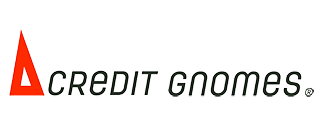Homeowner associations (HOAs) are a major part of the U.S. housing market – roughly 75.5 million Americans (over 30% of housing stock) live under HOAs. And that number is growing, with thousands of new HOAs forming each year. For community association managers, this means an expanding workload for fee collection and compliance. At the same time, resident satisfaction is under pressure. Recent surveys find that over half of HOA residents are dissatisfied, largely due to escalating dues driven by inflation. Many consider leaving because of rising fees. In this environment, community association managers need innovative solutions that justify the cost of membership and improve financial outcomes.
Modern Financial Management Trends in HOAs
Digital transformation is reshaping community management. Many HOAs are adopting cloud-based accounting and payment systems to streamline operations. Using online portals, owners can view balances and pay dues 24/7, removing delays and errors from check-based payments. Electronic payments speed up collections, and digital invoice approvals reduce mistakes. Automating routine billing tasks saves managers time and overhead. Residents now expect easy online access; platforms that give homeowners an all-in-one portal for payments and communication are becoming the norm. These tools boost transparency and satisfaction, providing 24/7 access to information and easy payments, which in turn improves the resident experience. HOAs that modernize their financial systems can improve cash flow and efficiencies, preparing them for more advanced solutions ahead.
Credit-Reporting: A New Strategy for HOA Dues
One emerging solution is credit bureau reporting of HOA payments. Under current regulations, HOAs can report both on-time and late assessment payments to the major credit bureaus. This means a homeowner who pays their HOA dues on time will have those payments added as positive tradelines on their credit report, similar to a mortgage or auto loan payment. Conversely, delinquencies can be reported and negatively impact credit. Credit reporting effectively elevates HOA obligations to the same level as a loan. Giving owners this leverage drives behavior: homeowners can get a boost in their scores for paying on time or see their scores drop if they skip payments. In essence, credit reporting provides boards with stronger leverage over delinquent payers and creates a powerful incentive for on-time payments.
Benefits for Associations and Boards
For community association managers and boards, the advantages of HOA payment reporting are compelling. First and foremost, it significantly improves collections. Reports from associations show that delinquency rates often plummet by around 30% within the first year of implementing credit reporting. With owners motivated to protect their credit scores, far fewer accounts become delinquent. This steady cash inflow gives associations more predictable revenue, enabling them to fund upkeep and projects without surprise shortfalls. With more consistent payments, an HOA can fund essential amenities and services and protect property values.
Better collections also mean less time and money spent on chasing late fees. Boards often face the prospect of special assessments or legal action when defaults spike, but credit reporting helps avoid those outcomes. When dues are paid reliably, an association need not levy emergency fees on all homeowners—a move often seen as unfair and a source of community conflict. Reducing delinquencies frees staff to focus on core community management instead of collections. With a more predictable cash flow, the association or management company has more time and resources to spend on value-adding services instead of chasing payments. Reporting HOA dues provides boards with a new enforcement tool that boosts revenue stability and cuts overhead.
Benefits for Homeowners
Homeowners benefit directly as well. When on-time HOA payments are added to credit reports, residents essentially get credit for paying their dues. This new tradeline can raise credit scores over time. Diversifying one’s credit accounts (for example, adding rent or HOA payments) tends to correlate with higher scores. In practical terms, a resident who pays each month on time can see a noticeable improvement in their credit profile, making it easier to qualify for mortgages, auto loans, or lower interest rates.
Many owners appreciate this extra perk. Offering credit-building benefits is a unique amenity. Having on-time payments reported could further boost homeowners’ credit scores. This would be an amenity homeowners would be happy about, and offering it could differentiate your property to potential homeowners. In other words, the ability for homeowners to build credit simply by paying their dues makes living in the community more attractive. The dues themselves remain the same, but residents gain an additional financial benefit. By framing their monthly obligation as an investment in good credit, HOAs can improve member satisfaction and retention; an important return on investment given that high fees have recently drawn criticism.
Getting Started with HOA Payment Reporting
How can community managers implement this strategy? The first step is choosing a compliant credit reporting partner. Many vendors now offer turnkey HOA payment reporting services that integrate with association billing systems. These platforms handle the data submission to bureaus and provide the necessary disclosures under the Fair Credit Reporting Act.
Managers should work with the HOA board to adopt clear policies and communications. Informing homeowners about the new reporting program is key to gaining support. Sample forms and templates—often provided by the reporting service—ensure homeowners receive required notices explaining the benefit and consent process. It’s also important to train accounting staff on any workflow changes, such as flagging accounts as paid or delinquent in the reporting system each month. With these steps in place, launching the program can be straightforward: just sync monthly payment records and let the system update the credit agencies.
As a best practice, some HOAs start with a pilot or phased rollout, beginning with only positive reporting, and track key metrics. Boards can then monitor delinquencies and homeowner feedback to optimize the process. Over time, such a program can become an integral part of the association’s resident benefits offering—one that aligns with the modern, tech-driven direction of HOA management.
Credit-reporting on HOA dues represents a timely innovation for community association managers. It addresses several current challenges at once: encouraging timely payments, leveraging digital management, and adding resident value. By partnering with a payment-reporting platform, associations can boost revenue, cut collection costs, and offer homeowners a credit-building perk. These outcomes directly answer the pain points of rising fees and administrative burden noted in industry studies. In practice, managers who use this approach see immediate financial upside and longer-term gains in member goodwill. Turning routine HOA dues into credit-reportable payments is a proven way to strengthen both community finances and homeowner satisfaction. Community association managers should explore this strategy as a forward-thinking step to keep their associations thriving in a competitive, high-cost environment.


